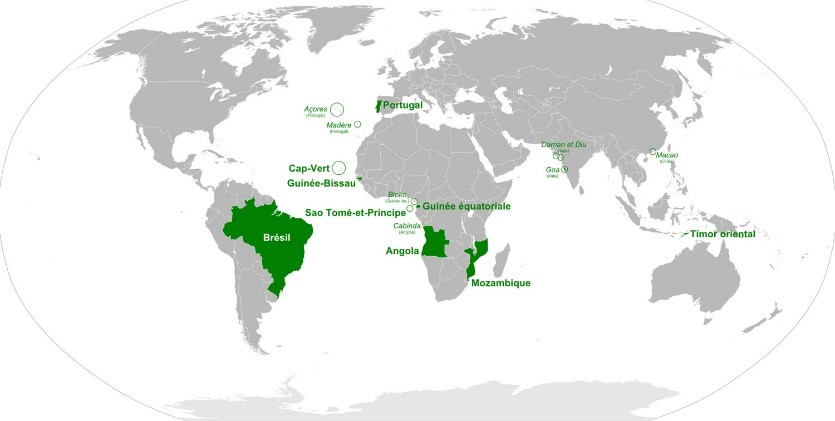Portuguese translation: which orthographic agreement to use?

Many multinational companies, along with those that have an international strategy, include Portuguese as the language to be employed to access the markets of Portugal and Brazil. Both countries have significant linguistic and cultural differences, which have ultimately led to a reform of written Portuguese. Far from simplifying the task of translators, this attempt to standardise the language has created even more problems in the translation process.
Índice de contenidos
Index of contents
Index du contenu
Inhaltsverzeichnis
Indice dei contenuti
1. Portuguese on a global level
At present, the Portuguese speaking community has 240 million speakers located in eight different countries. It is the sixth most spoken language in the world if we take into account the number of native speakers. As a general rule, Lusophone, Brazilian, Portuguese and other translators translate into the language variant of their country of origin, because there are significant cultural and orthographic differences. Or rather, there used to be such differences. For economic and pragmatic reasons, several different orthographic reforms have been proposed over the years.

The first revision entered into force in 1910, upon the proclamation of the Portuguese Republic. Written Portuguese was simplified in order to approximate the oral language. For example, Latin roots with “ph” became “f” (pharmacia >farmácia). This attempt at modernisation did nothing to facilitate relations between the members of the Lusophone community. The objective was not to bring the countries that speak Camões' language closer together. Portugal acted as both judge and jury and adopted the revision unilaterally.
2. Standardisation between written Brazilian and European Portuguese

In 1990, the Orthographic Agreement of the Portuguese Language came into existence, officially bringing together the representatives of seven countries (Angola, Brazil, Guinea-Bissau, Mozambique, Portugal and São Tomé and Príncipe). Since the definitive application of this agreement in 2015, which recommends leaving out accents and silent letters, written Portuguese has become much more intuitive and accessible. The objective of the agreement was to facilitate administrative and commercial exchanges and to promote learning of the Portuguese language. Approximately 1,000 words have changed spelling in Brazil and over 5,000 in Portugal. This seems like a huge number when compared to the 3,000 words employed on a daily basis in Spanish. Nowadays, a large number of Portuguese people refuse to implement the new writing system. It would imply, among other things, having to learn a whole new series of rules. In order to reach a certain consensus, the agreement stipulated that the former orthography would be preserved, and both variants accepted.
3. Translation into Portuguese: a challenge for translators, companies and translation agencies
The difficulties to translate a document into Portuguese have now multiplied. Imagine marketing a product in several Portuguese-speaking countries. Ideally, the catalogue, the user manual and all of the technical documents should be translated into Portuguese, in accordance with the 1990 orthographic reform. This variant should not pose a problem across the Atlantic, but in Portugal a large proportion of the population would find spelling errors in the translation (unaware that the latest orthographic reform is being applied). In this case, which orthography should be adopted for a document that will be used in Portugal?

We have already mentioned the Skopos theory in previous articles. This functional approach focuses on the idea that translation entails the production of a target text, within a specific context and culture. This text has a specific function, to communicate information to a target audience, taking into account their expectations, values and customs. Considered by many as an impoverishment of the language, this orthographic reform must be treated with kid gloves. Therefore, each sector will have its own strategy, in accordance with the objective and the audience of the text to be translated.
4. The orthographic reform and translation
While the reform has not eliminated cultural differences and uses of the language in Brazil and Portugal, it has made it possible to streamline processes and exchanges. In order to translate a document into Portuguese, we have to consider the function and target audience of the text for translation.
The first aspect that should be taken into account is the country. Other than certain administrative or financial documents, the Portuguese language is undoubtedly different on both sides of the Atlantic. The Brazilians seem to have accepted the use of the aforementioned rules, but there is a great deal of resistance in Portugal.

That still leaves us with the question, Which rules should be adopted to translate a document that will be used in Portugal? There tend to be economic sectors that are more willing and open to change. Such sectors will most likely accept the use of the modernised version of the language for administrative or financial documents. However, linguists tend to be much more careful when translating literary, legal or medical texts, while such professions have not decided to adopt the reform and it is not used in universities. Whatever the case may be, this matter is still controversial in Portugal and it is impossible to say whether the differences between written Brazilian and European Portuguese will be eliminated after an adaptation period.

We can conclude that companies themselves should ultimately decide which rules to adopt when translating into Portuguese, depending on their target market. This will often entail continuing to do things the same as before the 1990 reform, especially in the case of Portugal. For their part, translators and translation companies or agencies must make their customers aware, when they are not already, of the need to take a decision with regards to the rules to follow when translating into Portuguese.
Other articles you may be interested in:

Josh Gambin holds a 5-year degree in Biology from the University of Valencia (Spain) and a 4-year degree in Translation and Interpreting from the University of Granada (Spain). He has worked as a freelance translator, in-house translator, desktop publisher and project manager. From 2002, he is a founding member of AbroadLink and is the Head of Sales and Strategy of the company.




Add new comment